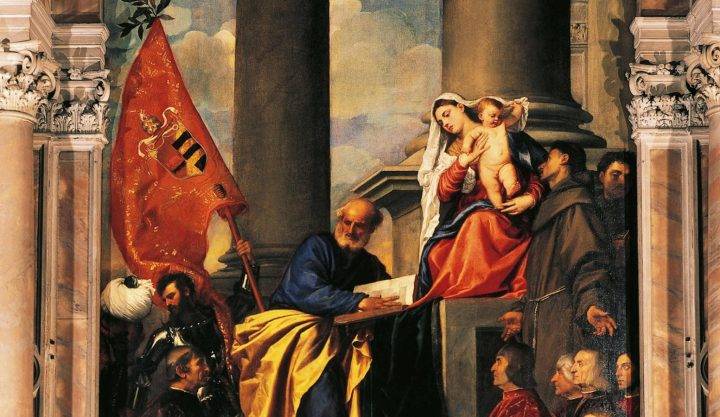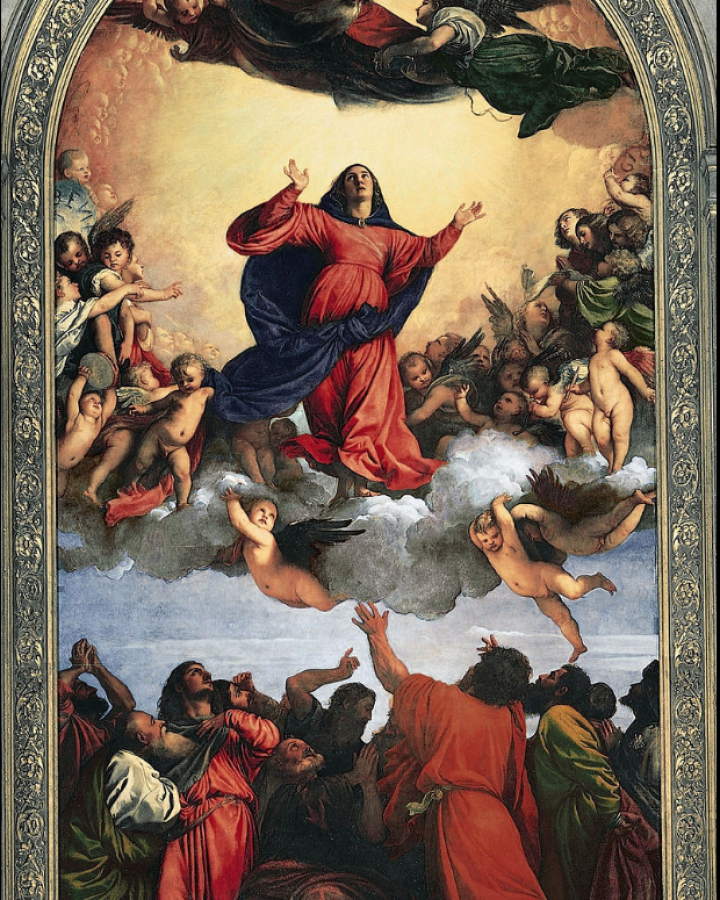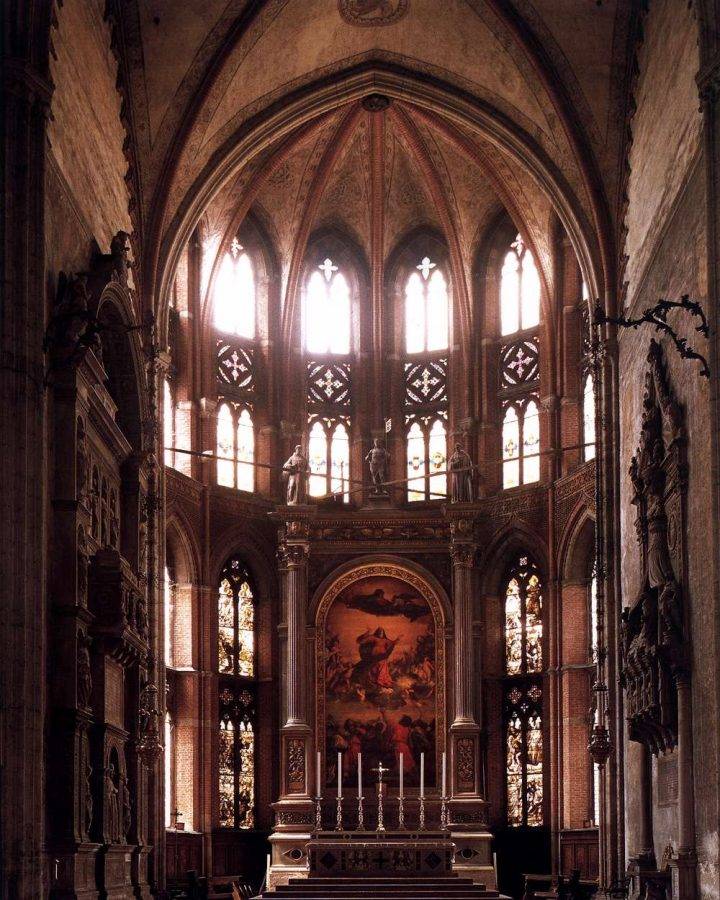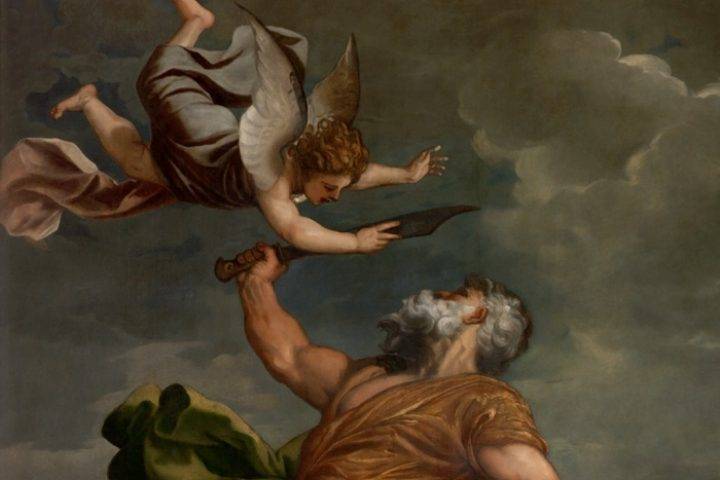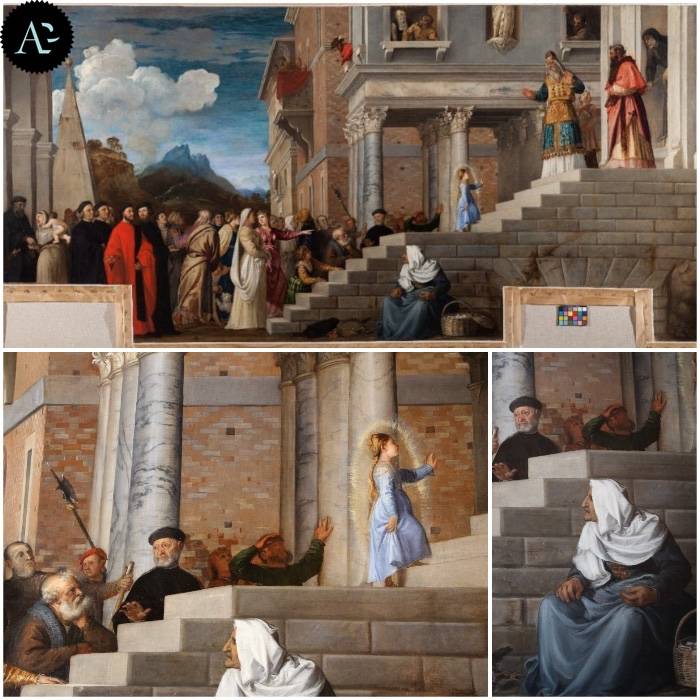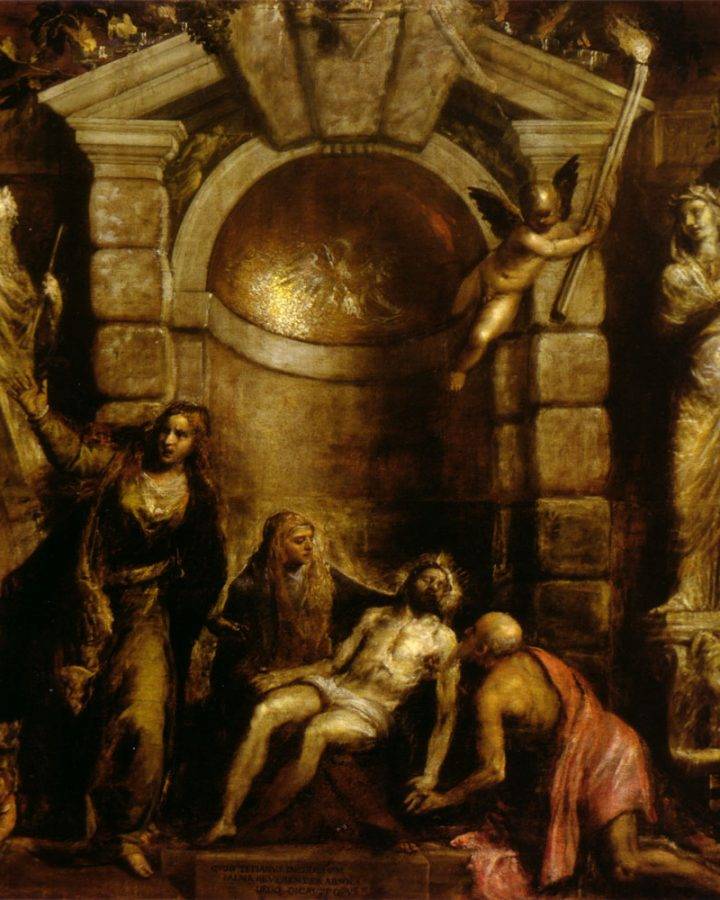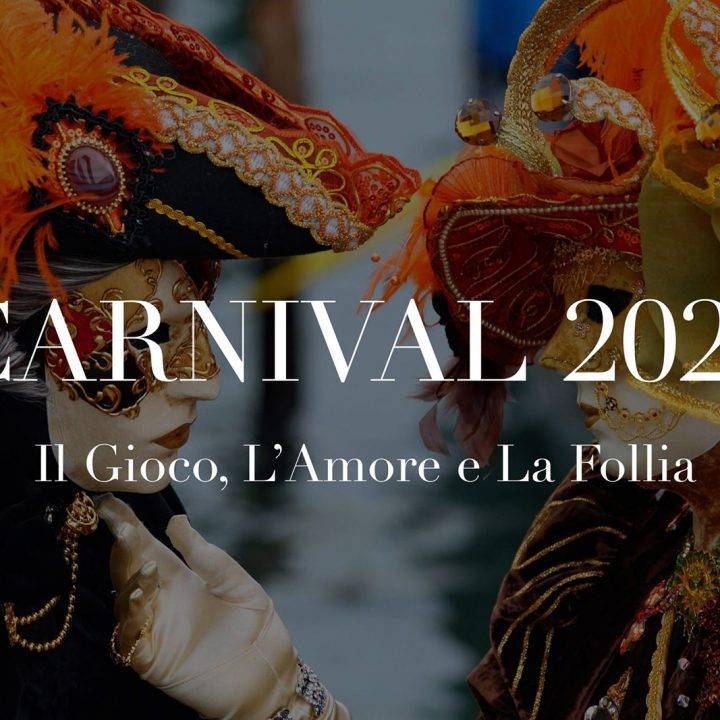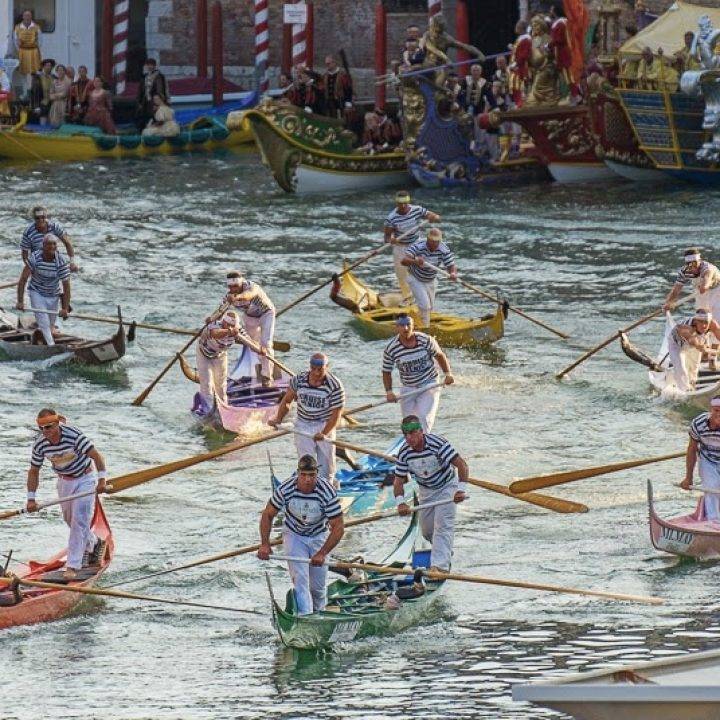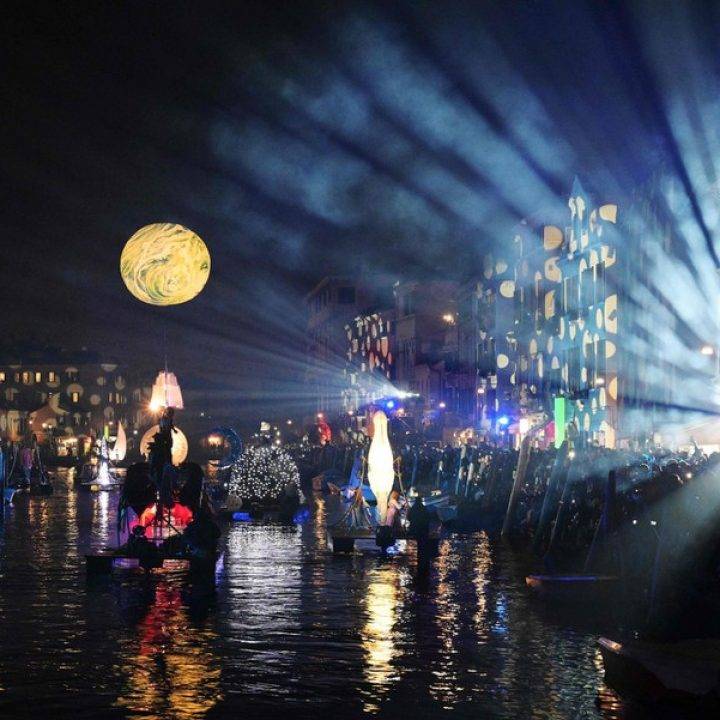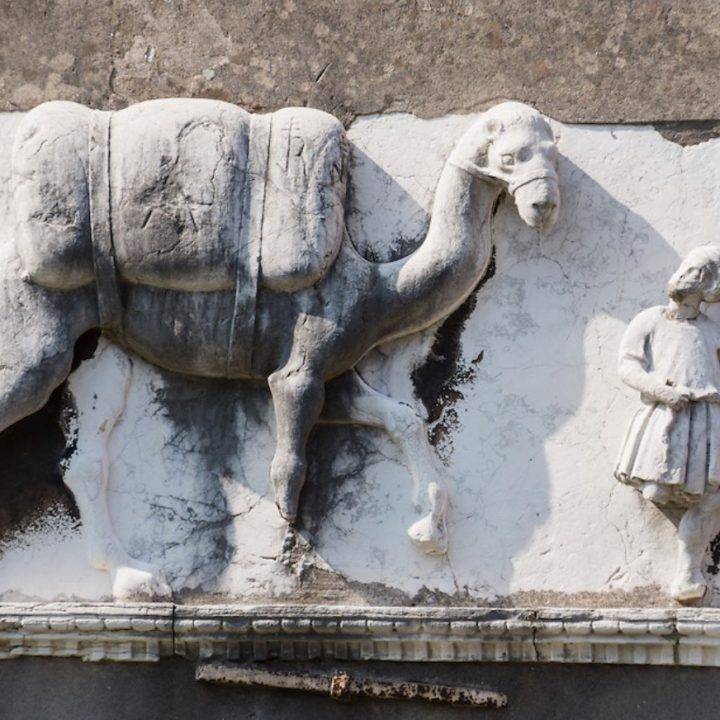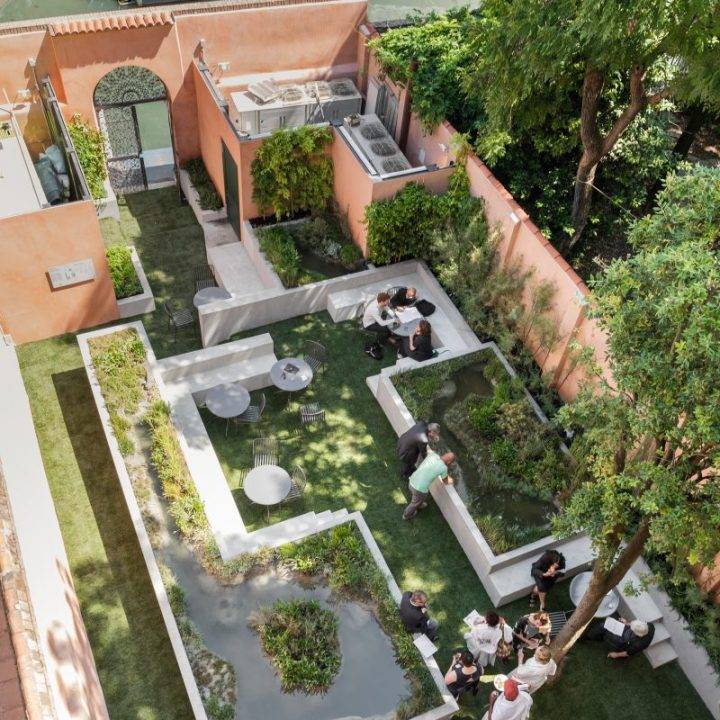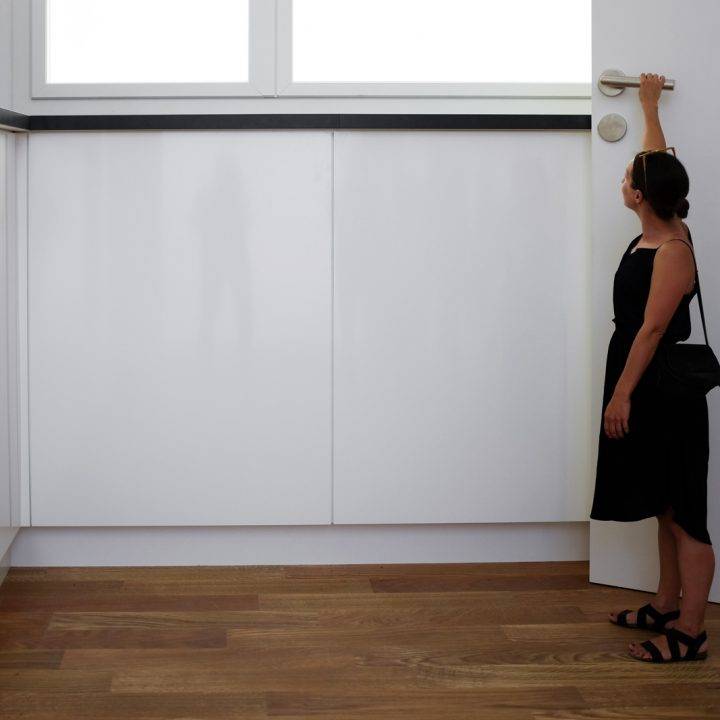Titian, often referred to as the greatest Venetian painter of the 16th century can be seen all over the city. His works can be found in the unexpected corners as well as Altars and the Palazzos. Follow this blog to find the masters works from the beginning to the end of his career.
History
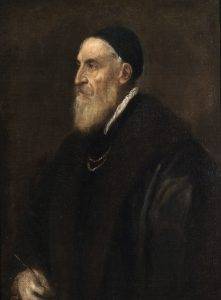
Tiziano Vecelli more commonly known as Titian in English, was born in a small town near to Belluno, Pieve da Cadore. Along with his brother, he was sent to study at a young age under the great master of the time, Giovanni Bellini. This was a huge privilege because when Titian arrived, Bellini was considered one of the most famous artists In Venice. Their relationship was very important for the growth of Titian, and can be seen even after Bellini retired. Later in his life Titian was called in to complete the works of Bellini in The Palazzo Ducale, just to show how much he had learnt.
Titian was celebrated from the very beginning of his career and soon surpassed his teacher but that is not to say that Bellini’s style, in particular some of Titans earliest pieces, is not evident. His style continued to evolve throughout his career although always showing a prominent interest in colour. He is still to this day counted as one of the founders of the Venetian School of Italian Renaissance Painting and his free brush strokes inspired generations of impressionist painters in years to come.
The wonderful thing about following in the footsteps of Titian in Venice is because it shows the whole arc of his career. Having started and finished in Venice, it is easy to see the steady growth from small self portraits to enormous religious frescoes. Arriving eventually at the highest praise the Serenissima could award, ‘The official Painter of the Serenissima’
For his time, Titian was also one of the very first artists to have created such a world wide reputation that his commissions came from Kings in Germany and Portugal. Meaning that he was never unsure of his success during his life time as was the case for so many other desperate artists.
Despite his international fame, Venice, as his adopted home town, has managed to hold on to some of Titians most notable works Including “Assumption of the Virgin” (Frari) and his last work, Pieta (Accademia). He was also laid to rest in the Frari church which now also holds the monumental tomb created for him by Canova.
Discover the Map of where to find Titian Here
Doges Palace
The Doges Palace, has always (unsurprisingly) held the most sort after pieces of work and popular artists. For the reason it is natural that the both Belini and Titian can be found here. Titians works are hidden all over the place, even lining staircases and minuscule rooms. It is well worth taking the time to look carefully.
Chiesa San Giovanni Elemosinario
Chiesa San Giovanni Elemosinario was founded in 1071 and then rebuilt by Antonio Scarpagnino after the Rialto fire. It is the most interesting example of Gothic architecture that has remained comparatively intact in Venice. This small church has, on its high altar, a painting of the titular saint, San Giovanni, by Titian.
Basilica di Santa Maria Gloriosa dei Frari
The Basilica is one of the most culturally active and loved churches in
Venice. Concerts are often held here because of the acoustics and number of spectacular paintings that adorn the walls, ceiling and altar. Amongst which you will find one of Titian’s most famous masterpieces (1516)
“Assumption of the Virgin” and “Madona di Ca’Pesaro”, under which lies the grave of the painter.
Gallerie dell’Accademia
Gallerie dell’ Accademia was founded primarily as an art school in 1750. It had the most famous art teachers of the time from all over Italy. Several works of Titian, including his last work ‘Pieta‘ (see above) can be found here. The painting was finished after his death by Jacopo Palma il Giovane.
Chiesa di Santa Maria Assunta
Titian’s painting ‘The Martyrdom of St Laurence’ is found in this Cannaregio Church. This church is also referred to as the The Gesuiti, a well known order of priests in the Roman Catholic church that are still active to this day. This church apart from Titans work, has some highly unusual columns that are well worth finding.
This Church is not to be confused, with the church Santa Maria del Rosario, a mistake this author made, that thankfully was corrected by a thoughtful guest. Santa Maria Del Rosario is located on the Zattere, beautiful in its own right but also known as the Gesuiti.
Basilica di Santa Maria della Salute
The salute Church has become an emblem of the Venetian Skyline. Inspiring several artists to capture its silhouette from the water especially. When it was built it was purposed as a celebration of the end of the plague. Several works by Titian enrich the sacristy: “San Marco in trono, con i santi Cosma, Damiano, Sebastiano e Rocco”, “Caino ed Abele”, “Il sacrificio di Abramo ed Isacco” and “Davide e Golia”.
A few more lesser known spots to find the masters works;
San Salvatore, an Annunciation,
San Marziale, Tobias the Angel
and San Lio, Apostle James.
Scuola di San Rocco, Annunciation
Fondacho dei Tedeschi, was intended to be one of Titians greatest commissions. Alongside Giorgione, he was requested to create frescoes for the exterior of this merchants building. However, with the humidity and extreme weather conditions of Venice, they were seen to be disappearing even in the artists lifetime.
Discover our own Tiziano apartment dedicated to the memory of the artist himself.

